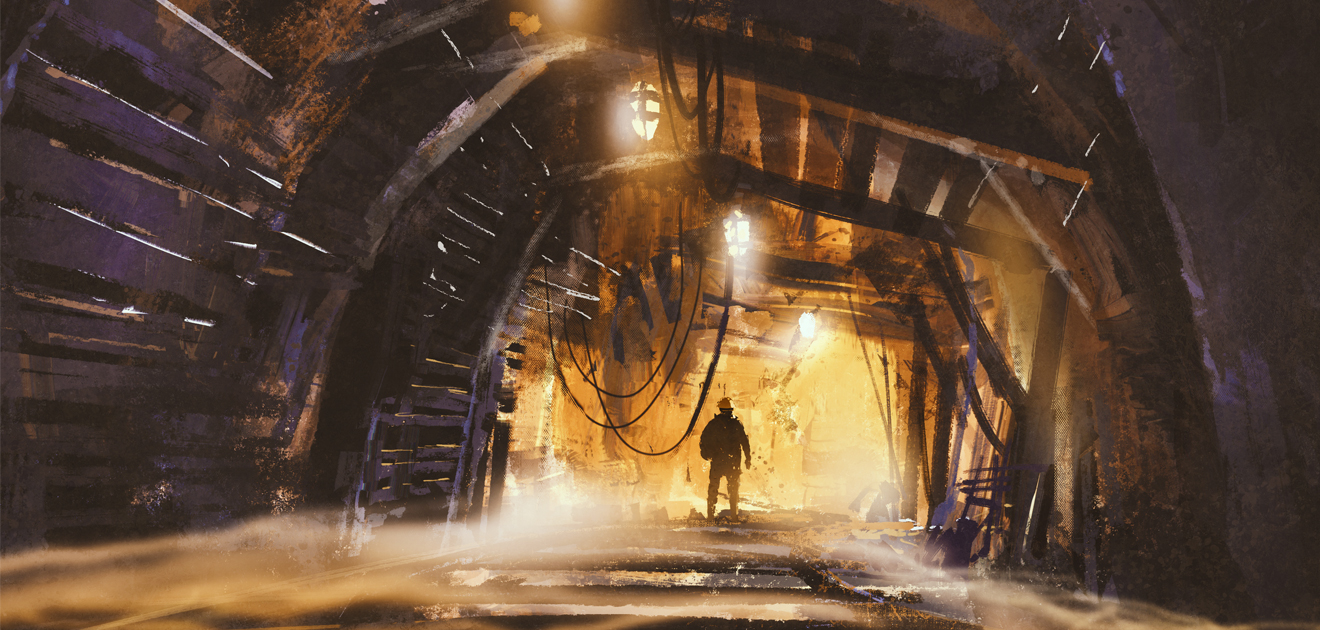Water damage is one of the common and dangerous natural disasters in mining operations. Effectively preventing and controlling mine water hazards, ensuring the safety and production stability of miners, is an important task of mine management.
Mine water damage mainly includes the following types:
Roof water damage: Roof water damage refers to water seepage, dripping, or gushing into the working face in the roof area of a mine. Roof water damage is often caused by infiltration of the overlying aquifer or seepage of water in the old goaf. In severe cases, it can lead to roof collapse and endanger the safety of miners.
Bottom plate water damage: Bottom plate water damage refers to the phenomenon of water seepage and gushing in the bottom plate area of a mine, mainly originating from the water accumulation in the bottom plate aquifer or fault fracture zone. Bottom plate water damage can lead to a decrease in the bearing capacity of the bottom plate, affecting mine production.
Wellbore water damage: Wellbore water damage refers to the phenomenon of water seepage or gushing in the mine shaft. Wellbore water damage usually comes from surface water leakage, aquifer infiltration, or the influx of accumulated water in old goafs. In severe cases, it can cause wellbore flooding, affecting normal production and safe entry and exit.
Fault water damage: Fault water damage refers to the phenomenon of water inrush occurring near the fractured zone of the mine fault layer. Fault fracture zones are channels for groundwater activity and are prone to water inrush, posing a significant threat to mine safety.
Water damage in goaf: Water damage in goaf refers to the accumulation of water in the goaf after mining, which enters the working face through leakage or water inrush. Water damage in goaf is often accompanied by roof damage and collapse, which seriously affects the safety of miners and equipment operation.

Corresponding prevention and control measures should be taken for different types of mine water hazards to ensure the safety of mine operations.
Roof water damage prevention and control: Strengthen roof support, enhance the stability of the roof support system through reasonable design and construction, and reduce the risk of roof damage; Set up a drainage system, install drainage pipes and collection pits on the top plate, timely discharge accumulated water, and prevent leakage; Monitor the status of the roof, regularly inspect the deformation and water seepage of the roof, and take timely reinforcement measures.
Bottom plate water damage prevention and control: Strengthen the bottom plate by using bottom plate grouting reinforcement technology to improve the bearing capacity of the bottom plate and reduce the risk of water seepage; Set up a drainage system, install drainage pipes and collection pits on the bottom plate, timely discharge accumulated water, and prevent leakage; Monitor the status of the bottom plate, regularly inspect the deformation and water seepage of the bottom plate, and take timely reinforcement measures.
Prevention and control of wellbore water damage: Waterproof curtains are installed around the wellbore to block the leakage channels of surface water and aquifers; The lining of the shaft is made of waterproof materials to improve the waterproof ability of the shaft; Drainage system, set up drainage pipes and collection pits in the wellbore to timely remove accumulated water and prevent flooding of the wellbore.
Fault water hazard prevention and control: Fault grouting is used to reinforce the fractured zone of the fault, block the seepage channel, and reduce the risk of water inrush; Drainage system, set up drainage pipes and collection pits near faults, timely discharge accumulated water, and prevent water inrush; Monitor the status of faults, regularly detect their deformation and water seepage, and take timely reinforcement measures.
Prevention and control of water damage in goaf: Strengthen roof support, enhance the stability of goaf roof support system through reasonable design and construction, and reduce the risk of collapse; Drainage system, set up drainage pipes and collection pits in the goaf, timely discharge accumulated water, and prevent leakage; Monitor the status of goaf, regularly inspect the deformation and water seepage of goaf, and take timely reinforcement measures.
Mine water damage is one of the important factors affecting mine safety production. By understanding common types of mine water hazards and taking scientific prevention and control measures, the safety guarantee capacity of mines can be effectively improved. Miners and managers should attach great importance to water hazard prevention and control work, enhance safety awareness, and ensure the safety and stability of mine operations. Only with the joint efforts of all personnel can mine safety production be achieved and the safety of miners' lives and property be guaranteed.







Comment